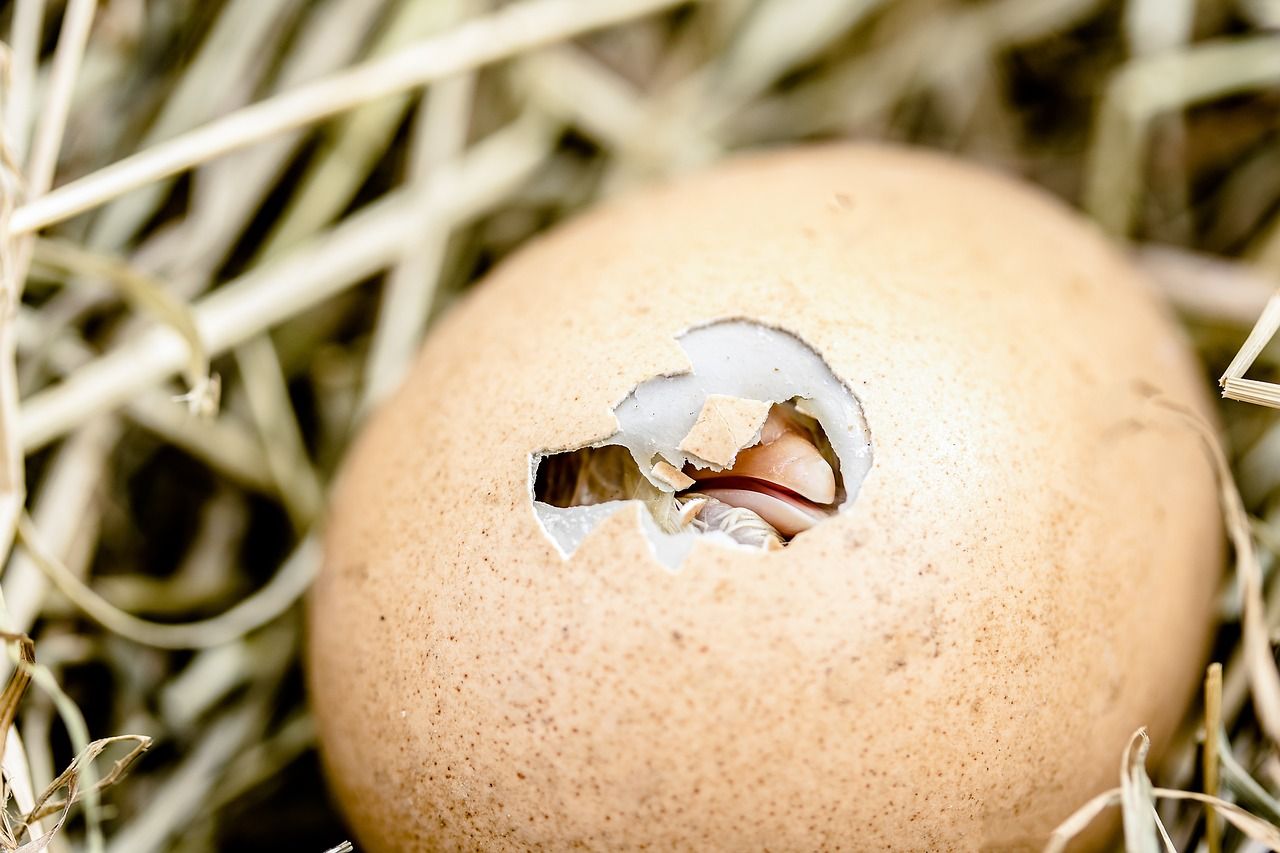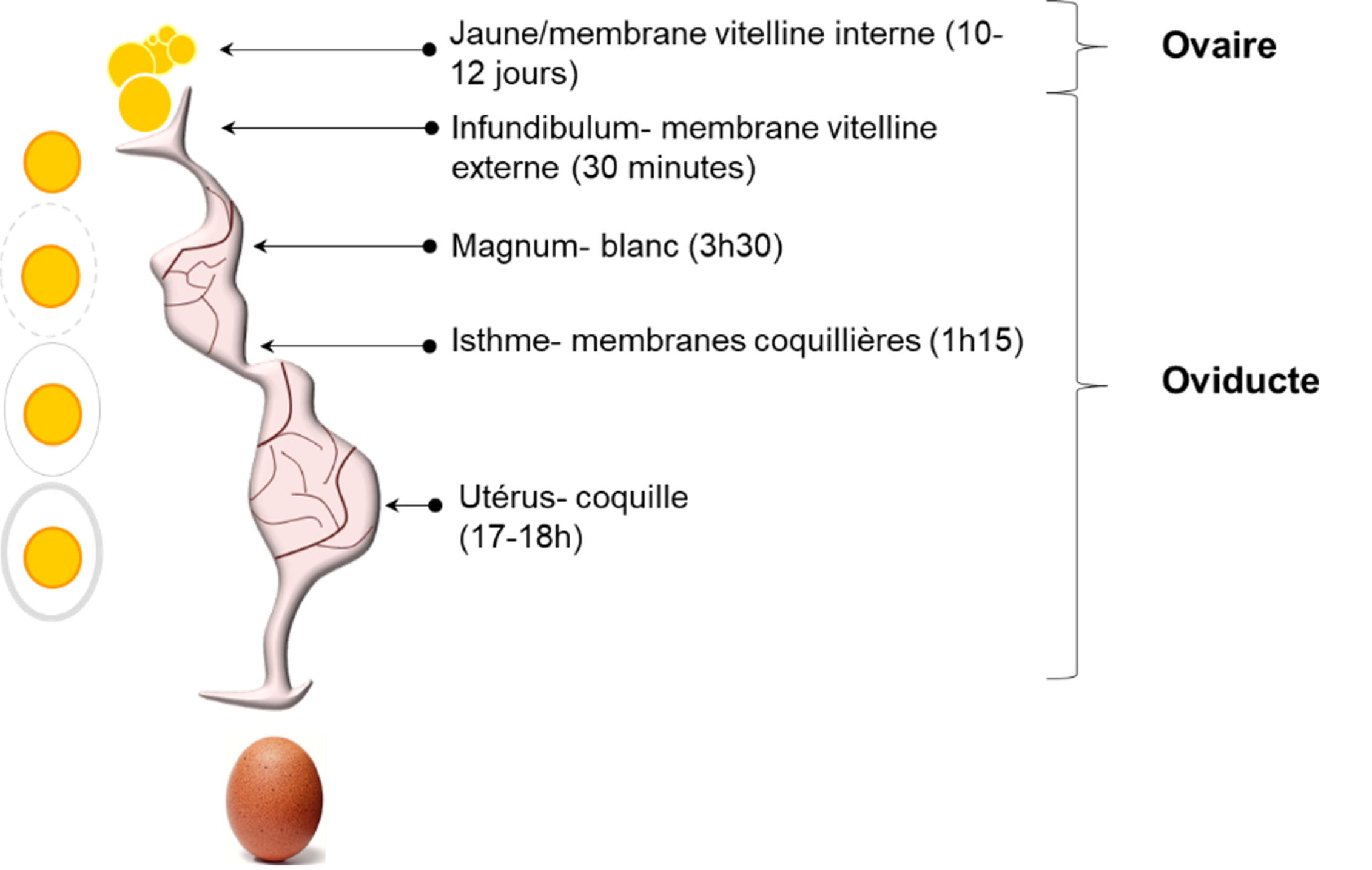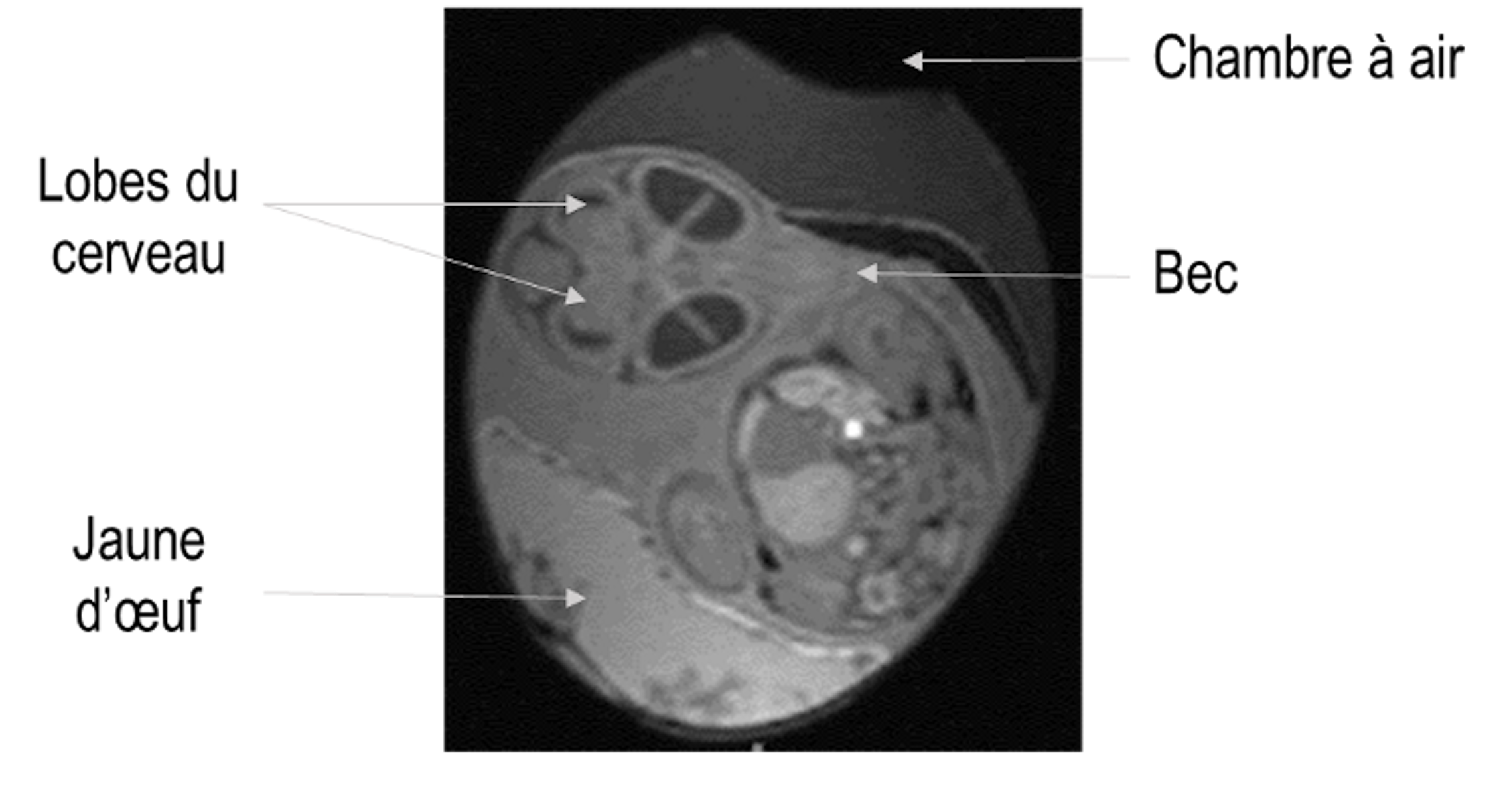How can a chick have enough strength to break its shell? 🐣
Published by Adrien,
Source: The Conversation under Creative Commons license
Other Languages: FR, DE, ES, PT
Source: The Conversation under Creative Commons license
Other Languages: FR, DE, ES, PT
Follow us on Google News (click on ☆)
While preparing your omelet, you may have found yourself needing several tries to crack your eggs. So how can a chick have enough strength to break out of its shell?

Illustration image - Pixabay
The egg is a closed environment that allows the development of an embryo and the future chick. It provides all the essential nutrients for the embryo to develop until hatching. It ensures gas exchanges of O2 and CO2 to allow the embryo to breathe, while also providing physical protection through the shell and molecular protection thanks to highly effective antimicrobial proteins.
The egg is formed inside the hen in the reproductive system, which consists of an ovary, where several yolks in formation can be observed, and a tube about 70 cm (roughly 27.5 inches) long called the oviduct, made up of different tissue segments, each responsible for a structure in the egg.

The formation of the egg in the reproductive system of the hen. The largest yolk is ovulated in the upper part of the oviduct and gradually surrounded by the other egg components. From yolk ovulation to laying, the process takes 23 to 24 hours.
INRAE, Centre Val de Loire, Provided by the author
Once ovulated, the largest yolk is captured by the first segment of the oviduct, called the infundibulum. This is where fertilization and the first cell divisions of the embryo occur. The egg then moves through the second segment called the magnum where the egg white proteins are deposited. It then reaches the third segment (the isthmus) which is responsible for the deposition of the shell membranes (the small white "skins" attached to the inside of the eggshell). The egg then passes through the uterus, the place where the shell is formed, where it stays for 17 to 18 hours out of the total 24 hours it takes to form the egg.
The eggshell, a futuristic ceramic
The shell is made up of calcium carbonate crystals. The arrangement of these crystals allows the eggshell of a chicken to resist a force of about 40 Newtons (equivalent to 4 kg, or 8.8 pounds of static pressure). The first crystals form on the shell membranes and grow perpendicular to them.
The growth of the crystals follows a specific orientation, thanks to proteins secreted at precise moments during the shell's formation in the uterus. The structure of the eggshell reveals shapes resembling elongated cones, with the base resting on the shell membranes. Some of these cones fuse, while others don't, allowing for the creation of pores that facilitate gas exchanges needed for the embryo to breathe.
Although some mechanisms behind crystal formation have been elucidated, the natural formation of such a structure at low pressure and low temperatures (41°C, or 105.8°F, in chickens) still holds mysteries that ceramists would like to uncover and imitate (biomimicry).
If the shell is so strong, how does the chick break it?
The shell is not “just” a physical barrier of protection. It is also a source of minerals, particularly calcium, which is necessary for forming the embryo's skeleton. During the second half of the embryo's development, the inner side of the shell is progressively dissolved and partially degraded at the base of the cones. This process leads to the dissolution of calcium carbonate crystals, similar to how vinegar dissolves lime scale.
The released calcium is reabsorbed and transported to the embryo via blood vessels to ensure the embryo's skeletal mineralization. At the same time, calcium dissolution weakens this bioceramic shell, making it easier for the chick to break free at the time of hatching.
A well-muscled chick
Two specific structures also help the chick break out. First, between the 10th and 21st day, a powerful temporary neck muscle aids the chick's head movements, which will help crack the shell. At the same time, a tough protrusion forms at the tip of the beak.
This structure, called the egg tooth, will be used to crack the shell when the chick positions itself for hatching. After hatching, the egg tooth falls off, while the temporary neck muscle degenerates. Neither structure is found in the adult chicken.
Starting on the 17th day, the chick becomes cramped inside the shell. It folds its head under its right wing and directs its beak toward the air pocket, which it will pierce on the 18th day using head movements caused by contractions and extensions of the neck muscle.

MRI of an embryo after 17 days of development. The embryo's beak gradually positions towards the top of the egg. At this stage, the egg white is no longer visible as it has been completely absorbed by the embryo via oral intake.
INRAE, Centre Val de Loire, Provided by the author
Lung breathing begins. The chick's oxygen demand continues to rise, and gas exchanges through the shell's pores or by breathing in the air chamber are no longer sufficient. The CO2 levels in the chick's blood gradually increase.
Between days 19 and 20, as oxygen becomes scarcer, the muscles start to contract periodically with increasing frequency and intensity. These movements cause the legs to extend, propelling the chick upward toward the egg's shell, while the contractions of the temporary neck muscle throw the head and beak against the shell.
The egg tooth, with its pyramid shape, breaks the shell by inserting itself between the cones of the shell, a task made easier by the weakened shell. The leg movements turn the chick, causing the hole in the shell to grow larger. The chick pushes with its legs and stretches, which finally breaks the shell apart. This is hatching.